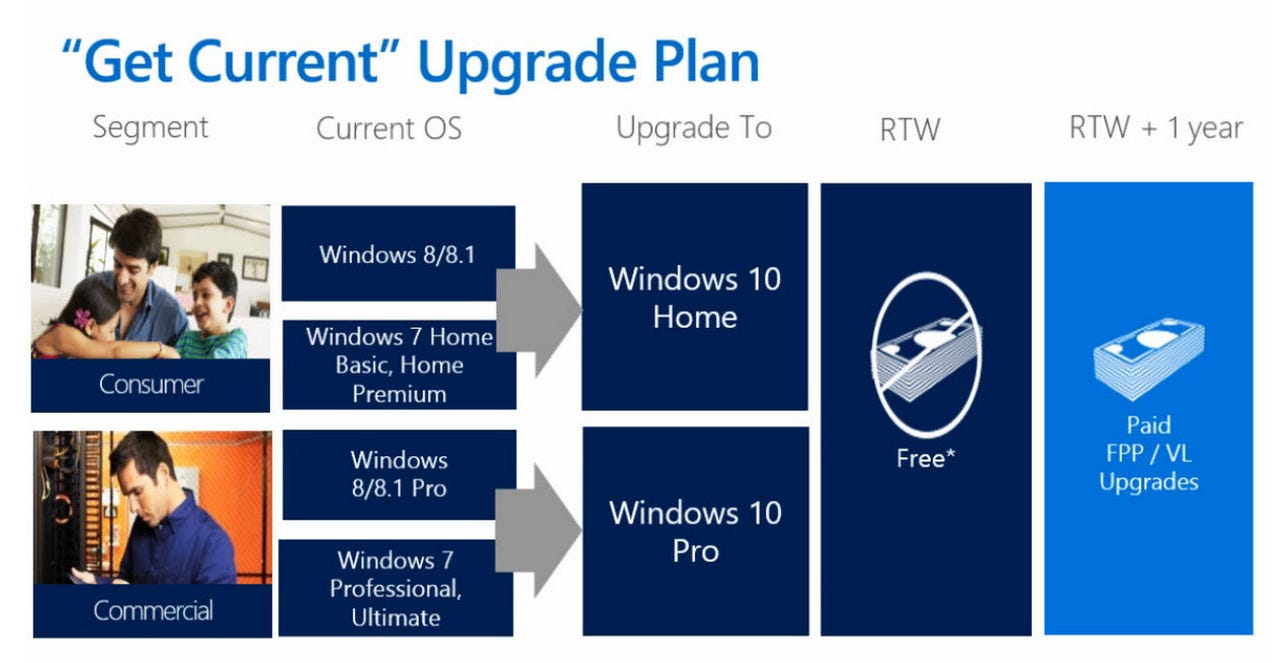Microsoft goes public with retail pricing for Windows 10 Home, Pro

The estimated retail pricing (ERP) for Windows 10 Home and Windows 10 Pro will match the ERP for the comparable Windows 8.1 versions, Microsoft officials said on June 1.

(Note: To be precise, the Windows 8.1 ERP pricing is $119.99 for Home, $199.99 for Pro and $99.99 for the upgrade from Home to Pro.)
Over the weekend, online retailer Newegg.com published what it claimed to be OEM pricing for Windows 10. Newegg said Windows 10 Home for OEMs/system builders would cost $109.99, and Windows 10 Pro, $149.99. Newegg also said on its site that Windows 10 for OEMs will be available on August 31, 2015.
Microsoft officials would not comment on any of the Newegg information. And I'm not sure whether Microsoft's official ERP statements mean the Newegg prices are out and out wrong, or if these are two different types of SKUs. (If and when I hear back from Microsoft, I'll update this post to reflect that information.)
More Windows 10
Microsoft is making Windows 10 available for free for the first year to consumers with Windows 7 Service Pack 1 and Windows 8.1 as of July 29, 2015. This is a limited time promotion that expires on July 29, 2016. Once the promotion ends, Microsoft will start charging Windows 7 and Windows 8.1 users to upgrade to Windows 10.
Once users are on Windows 10, they will receive security updates, hot fixes and new features on a rolling basis for no additional charge. Microsoft won't charge users for these updates. Instead, Microsoft will charge users who don't want to adopt the new feature updates it makes available to Windows 10 by requiring them to be running Windows 10 Enterprise, which offers a Long Term Servicing Branch.
The aforementioned $119/$199/$99 ERP pricing for Windows 10 is aimed at users who are moving from another OS (like Windows XP or Vista) to Windows 10, or who can't or don't want to upgrade to Windows 10 in the first year it's available.
There is still a lot we don't know regarding Microsoft's planned pricing and rollout timing for Windows 10.
Microsoft officials are not commenting on when the company will make Windows 10 available to volume licensees, including Enterprise users. No word from Microsoft on when the company plans to deliver Windows 10 to MSDN/TechNet or Dreamspark subscribers. Microsoft officials have said Windows 10 won't be free for Non-Genuine users, but still haven't said how much it will cost for those individuals.